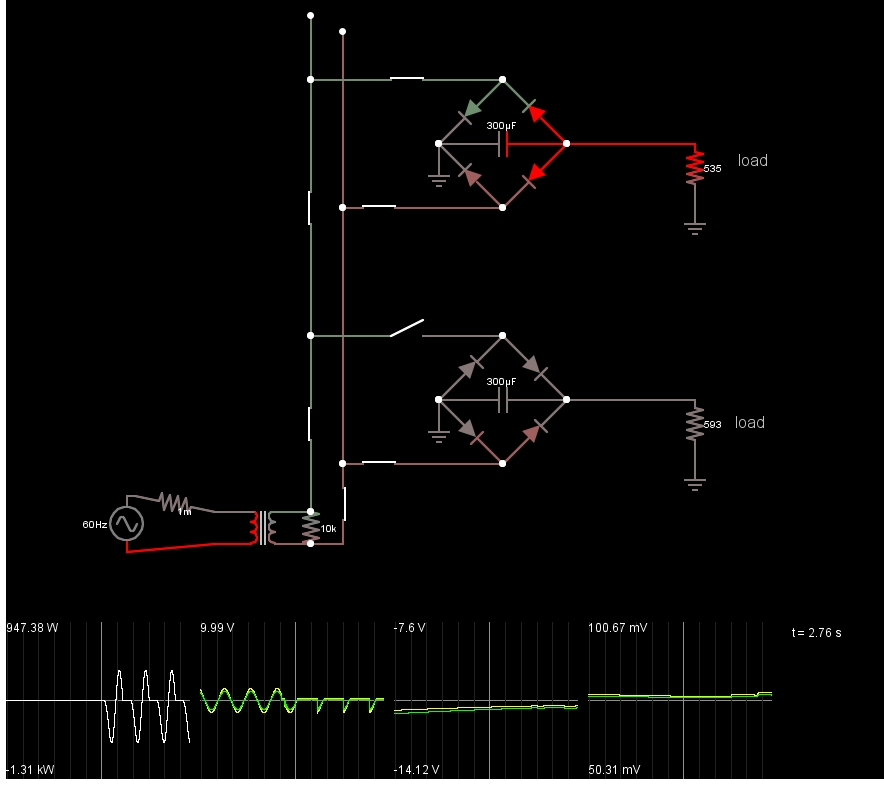Tomek
New Member
Hi
Thats basic question
but I couldnt find answer in other threads
Can I connect Toroidal Transformer secondary in parallel?
I need 9v AC 2-3A
I have Toroidal Transformer 2x9V 30W
Single secondary will give me 9V 15 W - which is about 1.5A (I think Im right?)
connecting both secondarys in paraller should give me 9V about 3 A
If above is correct (Im not fully sure) should it be like diagram A? or diagram B?
(attached pdf)
B does not looks right to me, isnt it short circuiting whole secondary?
Im using few electronics/music devices (multieffects/signal procesors)
all of them are powered by individual 9V AC adapters
- mess on the table and they affect my signal cables (50 Hz hum)
The idea is to get rid of them and use one transformer as master power,
keep it away from signal cables and split it to each device
thanks for help in advance
Thats basic question
but I couldnt find answer in other threads
Can I connect Toroidal Transformer secondary in parallel?
I need 9v AC 2-3A
I have Toroidal Transformer 2x9V 30W
Single secondary will give me 9V 15 W - which is about 1.5A (I think Im right?)
connecting both secondarys in paraller should give me 9V about 3 A
If above is correct (Im not fully sure) should it be like diagram A? or diagram B?
(attached pdf)
B does not looks right to me, isnt it short circuiting whole secondary?
Im using few electronics/music devices (multieffects/signal procesors)
all of them are powered by individual 9V AC adapters
- mess on the table and they affect my signal cables (50 Hz hum)
The idea is to get rid of them and use one transformer as master power,
keep it away from signal cables and split it to each device
thanks for help in advance

